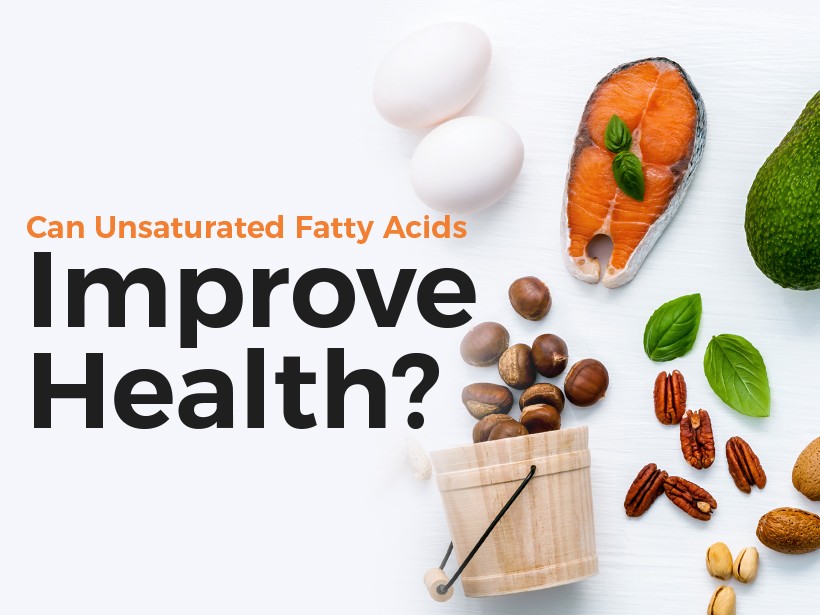If you’re consuming a healthy, balanced diet, you’re likely consuming fats of all types: saturated, monounsaturated, and polyunsaturated fats. Plus, your body synthesizes saturated and monounsaturated fatty acids for energy, physiology, and structure. One example of this is palmitic acid made in the liver from starch and sugar – this is a saturated fat.1 However, the most important of those fats to consume are the polyunsaturated fats. The AHA Presidential Advisory concluded that if you lower your intake of saturated fats and consume mostly unsaturated fats like polyunsaturated fats, it will lower the occurrence of developing cardiovascular disease.
The Big Difference
So, what’s the difference between these fats? Honestly, it’s all in the structure. Saturation refers to the amount of hydrogen on the carbon chains of the fatty acids. The more hydrogen, the more saturated they are. “Unsaturated” fats make up for a loss of hydrogen by double bonds which makes kinks in their chains. Saturated fats are rigid and can pack tight (e.g., lard) while unsaturated fats are bent and don’t pack tight (e.g., olive oil). Your body metabolizes these fats differently because of their structures. It’s harder to break down saturated fatty acids because they are packed together so tightly.
Unsaturated Fats are Superior
Among the scientific community, it’s agreed upon that unsaturated fats are much better for you than saturated fats. Some studies have clearly indicated a link between saturated fat and coronary heart disease which is influenced by culture, geography, and the economy.2 Other studies have examined unsaturated fatty acids more closely and conclude that they are good for you. One study found that replacing carbs with unsaturated fats reduced coronary heart disease(CHD)-related mortality rates, plus it helped people live longer if they had conditions like CHD, cancer, or neurodegenerative disease.3
High Fat, Low Blood Pressure
If that’s not enough support, consider this 6-week study of patients with prehypertension or stage 1 hypertension who consumed either a high-carb, high-protein, or high mono-unsaturated fatty acid diet. Researchers specifically focused on measuring blood pressure and low-density lipoprotein levels; the diets with unsaturated fats like olive oil resulted in greater improvements in their health compared to those carb-rich diets.4
What You Can Do
So, what can you consume more of if you want to improve your lifestyle? Fish oil is a fantastic option as it’s full of n-6 highly unsaturated fatty acids.5 Other options include nuts, seeds, avocados, and vegetable oils. Help fight the growing trend of carbohydrate intake and corresponding rates of obesity and cardiovascular disease in the United States and other countries by consuming more unsaturated fats and fewer carbohydrates.6 Your body will thank you for it.
NUTRITIONAL DISCLAIMER
The content on this website should not be taken as medical advice and you should ALWAYS consult with your doctor before starting any diet or exercise program. We provide nutritional data for our recipes as a courtesy to our readers. We use Total Keto Diet app software to calculate the nutrition and we remove fiber and sugar alcohols, like erythritol, from the total carbohydrate count to get to the net carb count, as they do not affect your blood glucose levels. You should independently calculate nutritional information on your own and not rely on our data. The website or content herein is not intended to cure, prevent, diagnose or treat any disease. This website shall not be liable for adverse reactions or any other outcome resulting from the use of recipes or recommendations on the Website or actions you take as a result. Any action you take is strictly at your own risk.
- Research Shows Improvement in Anorexia Nervosa Condition With Keto - August 6, 2018
- New Potential for Ketogenic Diet to Prevent Alcohol Withdrawal Syndrome - August 1, 2018
- Woman on Early Menopause Saved By Keto - July 25, 2018




